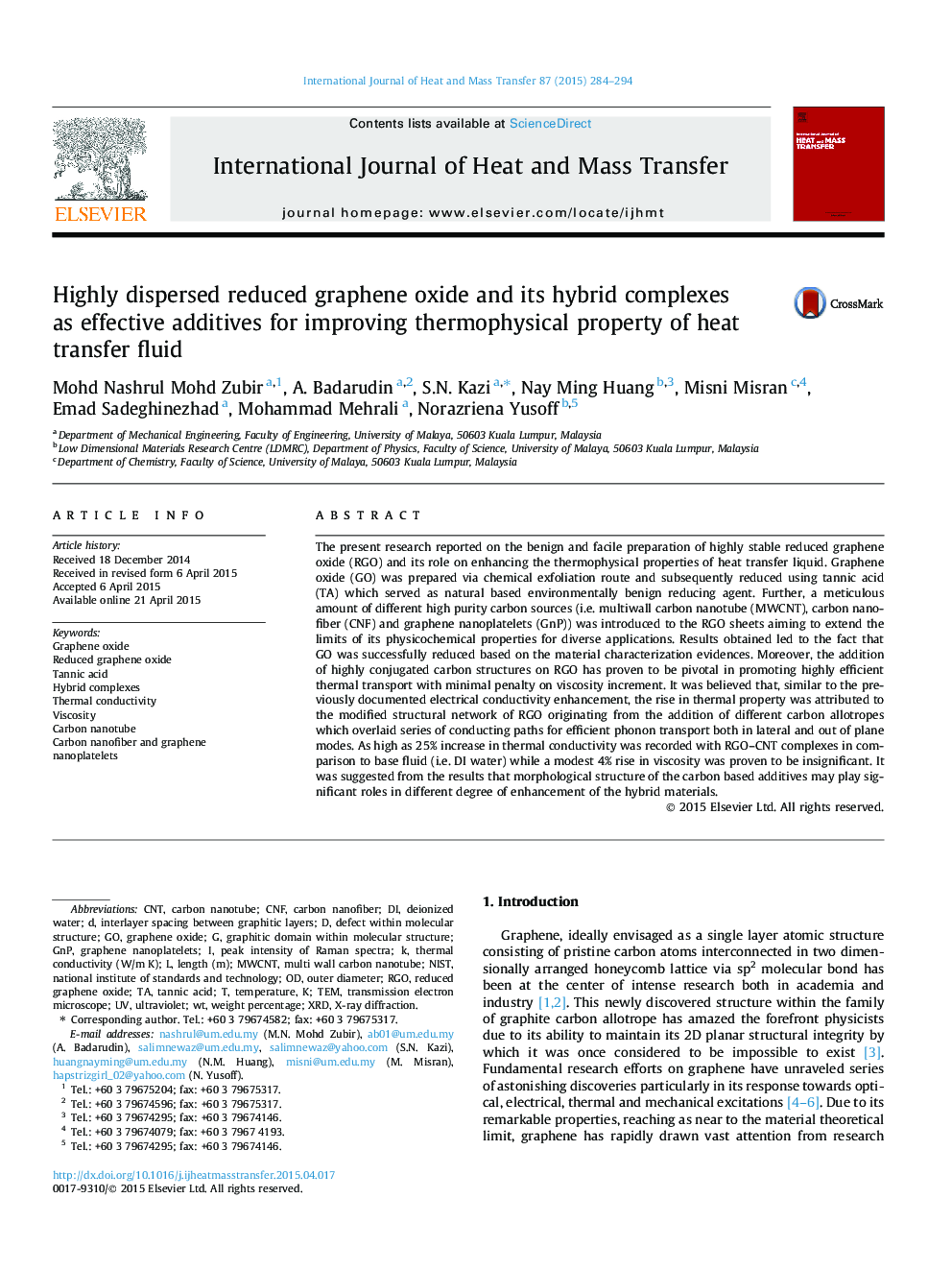| Article ID | Journal | Published Year | Pages | File Type |
|---|---|---|---|---|
| 657116 | International Journal of Heat and Mass Transfer | 2015 | 11 Pages |
Abstract
The present research reported on the benign and facile preparation of highly stable reduced graphene oxide (RGO) and its role on enhancing the thermophysical properties of heat transfer liquid. Graphene oxide (GO) was prepared via chemical exfoliation route and subsequently reduced using tannic acid (TA) which served as natural based environmentally benign reducing agent. Further, a meticulous amount of different high purity carbon sources (i.e. multiwall carbon nanotube (MWCNT), carbon nanofiber (CNF) and graphene nanoplatelets (GnP)) was introduced to the RGO sheets aiming to extend the limits of its physicochemical properties for diverse applications. Results obtained led to the fact that GO was successfully reduced based on the material characterization evidences. Moreover, the addition of highly conjugated carbon structures on RGO has proven to be pivotal in promoting highly efficient thermal transport with minimal penalty on viscosity increment. It was believed that, similar to the previously documented electrical conductivity enhancement, the rise in thermal property was attributed to the modified structural network of RGO originating from the addition of different carbon allotropes which overlaid series of conducting paths for efficient phonon transport both in lateral and out of plane modes. As high as 25% increase in thermal conductivity was recorded with RGO-CNT complexes in comparison to base fluid (i.e. DI water) while a modest 4% rise in viscosity was proven to be insignificant. It was suggested from the results that morphological structure of the carbon based additives may play significant roles in different degree of enhancement of the hybrid materials.
Keywords
GNPNISTCNTCNFMWCNTrGOdeionized waterTannic acidUltravioletGraphene oxideReduced graphene oxideTemweight percentageThermal conductivityOuter diameterHybrid complexesNational Institute of Standards and TechnologyTransmission electron microscopeCarbon nanofiberGraphene nanoplateletsCarbon nanotubeMulti wall carbon nanotubeViscosityX-ray diffractionXRD
Related Topics
Physical Sciences and Engineering
Chemical Engineering
Fluid Flow and Transfer Processes
Authors
Mohd Nashrul Mohd Zubir, A. Badarudin, S.N. Kazi, Nay Ming Huang, Misni Misran, Emad Sadeghinezhad, Mohammad Mehrali, Norazriena Yusoff,
